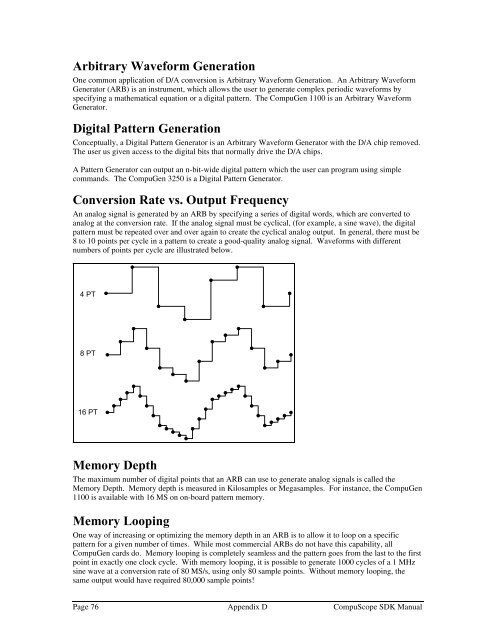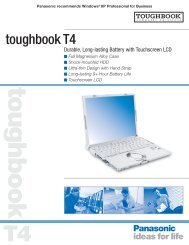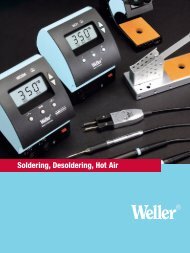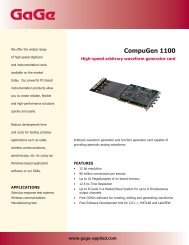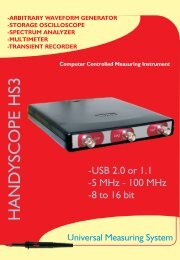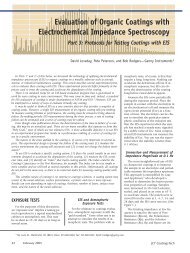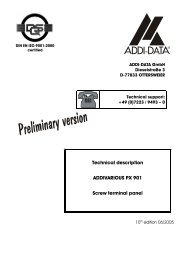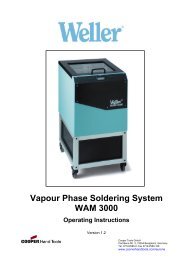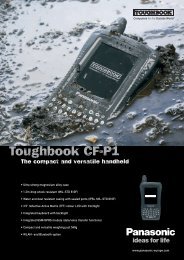CompuScope SDK Manua.. - Egmont Instruments
CompuScope SDK Manua.. - Egmont Instruments
CompuScope SDK Manua.. - Egmont Instruments
Create successful ePaper yourself
Turn your PDF publications into a flip-book with our unique Google optimized e-Paper software.
Arbitrary Waveform GenerationOne common application of D/A conversion is Arbitrary Waveform Generation. An Arbitrary WaveformGenerator (ARB) is an instrument, which allows the user to generate complex periodic waveforms byspecifying a mathematical equation or a digital pattern. The CompuGen 1100 is an Arbitrary WaveformGenerator.Digital Pattern GenerationConceptually, a Digital Pattern Generator is an Arbitrary Waveform Generator with the D/A chip removed.The user us given access to the digital bits that normally drive the D/A chips.A Pattern Generator can output an n-bit-wide digital pattern which the user can program using simplecommands. The CompuGen 3250 is a Digital Pattern Generator.Conversion Rate vs. Output FrequencyAn analog signal is generated by an ARB by specifying a series of digital words, which are converted toanalog at the conversion rate. If the analog signal must be cyclical, (for example, a sine wave), the digitalpattern must be repeated over and over again to create the cyclical analog output. In general, there must be8 to 10 points per cycle in a pattern to create a good-quality analog signal. Waveforms with differentnumbers of points per cycle are illustrated below.4 PT8 PT16 PTMemory DepthThe maximum number of digital points that an ARB can use to generate analog signals is called theMemory Depth. Memory depth is measured in Kilosamples or Megasamples. For instance, the CompuGen1100 is available with 16 MS on on-board pattern memory.Memory LoopingOne way of increasing or optimizing the memory depth in an ARB is to allow it to loop on a specificpattern for a given number of times. While most commercial ARBs do not have this capability, allCompuGen cards do. Memory looping is completely seamless and the pattern goes from the last to the firstpoint in exactly one clock cycle. With memory looping, it is possible to generate 1000 cycles of a 1 MHzsine wave at a conversion rate of 80 MS/s, using only 80 sample points. Without memory looping, thesame output would have required 80,000 sample points!Page 76 Appendix D <strong>CompuScope</strong> <strong>SDK</strong> <strong>Manua</strong>l


